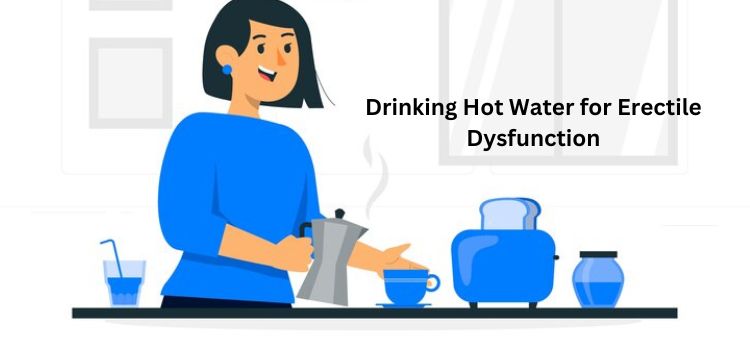Meditation and hypnosis, seemingly distinct practices, share intriguing similarities that often go unnoticed. In this exploration, we will delve into the commonalities between meditation and hypnosis, uncovering the threads that weave through these practices and examining the unique qualities that set them apart.
Meditation and hypnosis are both avenues that facilitate altered states of consciousness. While meditation is often associated with mindfulness and relaxation, hypnosis has its roots in suggestion and trance. Understanding the nuances of these altered states sets the stage for exploring their common ground.

I. The Power of Focus and Concentration
A. Meditation’s Focus on the Present
Meditation emphasizes bringing attention to the present moment, whether through mindful breathing, guided imagery, or other techniques. The power of concentration in meditation lies in fostering a deep awareness of one’s thoughts and surroundings.
B. Hypnosis and Directed Concentration
Hypnosis, on the other hand, involves directed concentration, often guided by a hypnotist. The hypnotic state encourages a heightened focus on specific thoughts or suggestions, leading to a trance-like state where the subconscious mind becomes more receptive.
II. The Gateway to Relaxation and Stress Reduction
A. Meditation’s Calming Effect
One of the primary goals of meditation is relaxation. By calming the mind and body, individuals can reduce stress and promote overall well-being. Techniques such as progressive muscle relaxation and deep breathing contribute to the tranquil state achieved through meditation.
B. Hypnosis for Stress Management
Hypnosis also serves as a tool for stress reduction. The induced trance allows individuals to access a state of deep relaxation, often accompanied by suggestions aimed at alleviating stress and promoting a sense of calm.
III. Accessing the Subconscious Mind
A. Meditation’s Exploration of the Subconscious
In meditation, practitioners often delve into the depths of their subconscious minds. Through practices like visualization and introspection, individuals can gain insights into their thoughts, emotions, and past experiences, fostering self-discovery and personal growth.
B. Hypnosis and Unveiling the Subconscious
Hypnosis, too, involves tapping into the subconscious mind. The hypnotic state allows for heightened suggestibility, enabling individuals to explore and address underlying beliefs, habits, and memories that may influence their behavior.
IV. Enhanced Mind-Body Connection
A. Meditation’s Integration of Mind and Body
Meditation places a strong emphasis on the mind-body connection. Practices like yoga and mindful movement encourage the integration of mental and physical awareness, promoting holistic well-being.
B. Hypnosis and Psychosomatic Harmony
Hypnosis, while primarily a mental state, can also influence the body. The power of suggestion in hypnosis can lead to psychosomatic responses, such as changes in heart rate, blood pressure, and even pain perception.
V. Altered Perception of Time
A. Meditation’s Timelessness
In deep meditation, individuals often report a sense of timelessness. The heightened state of awareness can distort the perception of time, making minutes feel like hours or vice versa.
B. Hypnosis and Time Distortion
Similarly, hypnosis can induce time distortion. During a hypnotic trance, individuals may experience alterations in their perception of time, with sessions feeling either shorter or longer than they are.
VI. Self-Exploration and Personal Growth
A. Meditation’s Journey Within
Meditation is a journey of self-exploration and personal growth. It provides a space for individuals to connect with their inner selves, fostering a sense of clarity, purpose, and mindfulness in daily life.
B. Hypnosis and Behavioral Transformation
Hypnosis, when used for therapeutic purposes, aims at behavioral transformation. By addressing subconscious patterns and beliefs, individuals can experience positive changes in behavior, habits, and responses to various stimuli.
VII. Differences in Approach and Purpose
A. Meditation’s Broad Spectrum
Meditation encompasses a broad spectrum of practices, from traditional mindfulness to transcendental meditation. Its applications range from spiritual pursuits to secular well-being, offering a versatile toolkit for individuals.
B. Hypnosis as a Directed Process
Hypnosis, in contrast, is often a more directed process. Whether used for therapeutic purposes or entertainment, hypnosis typically involves a guide (hypnotist) leading the individual through specific suggestions or experiences.
VIII. The Role of Suggestion
A. Meditation’s Internal Guidance
Meditation relies on internal guidance, with individuals directing their focus inward. While guided meditations exist, the emphasis is on self-regulation and the individual’s ability to guide their thoughts.
B. Hypnosis’s External Guidance
Hypnosis often involves external guidance. The hypnotist provides suggestions, shaping the individual’s experience during the trance state. This external influence distinguishes hypnosis as a more guided process.
IX. Conclusion: Embracing the Dualities
In conclusion, while meditation and hypnosis share commonalities in altered states, focus, and relaxation, they diverge in their approaches, purposes, and the role of suggestion. Embracing the dualities of these practices allows individuals to appreciate their unique qualities and potential benefits.
Frequently Asked Questions (FAQs)
- Can meditation lead to hypnosis? While both involve altered states of consciousness, meditation and hypnosis have distinct purposes. Meditation aims at mindfulness and relaxation, while hypnosis often involves guided suggestions for specific outcomes.
- Is hypnosis similar to being in a trance during meditation? Both hypnosis and certain deep meditative states involve altered consciousness, but the experiences differ. Hypnosis often includes external guidance and suggestion, while meditation tends to be more self-directed.
- Can hypnosis enhance the benefits of meditation? Hypnosis and meditation can complement each other, especially in stress reduction and behavioral change. However, it’s crucial to approach their integration with awareness and clarity about individual goals.
- Are there risks associated with combining meditation and hypnosis? Combining meditation and hypnosis can be beneficial, but individuals with certain mental health conditions should exercise caution. Consulting with healthcare professionals or experienced practitioners is advisable.
- How can one choose between meditation and hypnosis for personal development? The choice between meditation and hypnosis depends on individual preferences and goals. Meditation offers a broad range of practices, while hypnosis provides more directed processes. Exploring both and assessing personal resonance is a valid approach.


